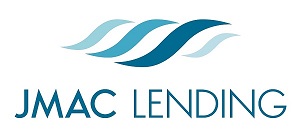FHA Streamline Refinance
The FHA Streamline Refinance program is designed to help borrowers who have a current FHA-insured loan. It's an easy way to potentially lower interest rates and reduce monthly payments. This refinance option requires minimal paperwork, making the process faster and easier.
FHA Streamline Refinance Program Features
Available to borrowers with an existing FHA loan
No appraisal documentation or income required
Negative equity - refinance even if you owe more than your home is worth
No need to calculate a DTI
Mortgage-only credit report
Permanently lower the monthly payments
Must meet Net Tangible Benefit (NTB)
Minimum FICO score is 580
Minimum loan amount is $75K
FHA Streamline eligibility
The FHA Streamline refinance program has more relaxed lending guidelines than traditional refinances when it comes to an appraisal, credit check and income verification. Yet it still has eligibility requirements.
Non Credit Qualifying
A Borrower is eligible for an FHA Streamline Refinance without credit qualification if all Borrowers on the existing Mortgage remain as Borrowers on the new Mortgage. Mortgages that have been assumed are eligible provided the previous Borrower was released from liability.
There is an exception: A Borrower on the Mortgage to be paid may be removed from title and new Mortgage in cases of divorce, legal separation or death when the divorce decree or legal separation agreement awarded the Property and responsibility for payment to the remaining Borrower, if applicable, and the remaining Borrower can demonstrate they have made the Mortgage Payments for a minimum of 6 months prior to the new case number assignment.
Credit Qualifying
(a) Borrower Eligibility - At least one Borrower from the existing Mortgage must remain as a Borrower on the new Mortgage.
(b) Credit Underwriting - In addition to the requirements in this section, credit qualifying Streamline Refinances must meet all requirements of manual underwriting, except for any requirements for Appraisals or LTV Calculations.
FHA Streamline eligibility guidelines
1. The borrower must refinance an FHA loan
This is the primary rule. In order to take advantage of the FHA Streamline program, the borrower must already have an FHA-insured mortgage.
2. The borrower must receive a Net Tangible Benefit
To use an FHA Streamline refinance, the borrower’s new mortgage must result in what the FHA calls a “net tangible benefit” for the borrower. These net tangible benefits include:
At least a .5 percent reduction in your fixed-rate mortgage payment (including the mortgage insurance premium)
Changing from and Adjustable-Rate Mortgage (ARM) to a fixed-rate mortgage
Shortening the loan term or extending it (to lower payments)
ARM streamline refinances have other specific requirements, as well. If you’d like to streamline refinance a one-year ARM to a fixed-rate loan, for example, the new interest rate cannot be more than two percentage points higher than the current ARM rate. The inverse is also true: If you’re refinancing a fixed-rate loan to a one-year ARM, the new rate must be at least two percentage points lower than the fixed rate.
3. The borrower can only apply after a waiting period
At least six on-time payments
Six months have passed since the first payment due date
It’s been 210 days since the FHA loan closed
4. The borrower must have a history of on-time payments
If the FHA loan is less than one year old, the borrower needs to have made all monthly payments on time. If the borrower has had the mortgage for more than a year, they are allowed one 30-day late payment in the past 6 months — but, the borrower must have made all mortgage payments on time for the three months prior to applying for the refinance.
5. The borrower must pay mortgage insurance premiums
Like all FHA loans, the borrower must pay Mortgage Insurance Premiums (MIP) on an FHA Streamline refinance. This means another upfront MIP, plus annual MIPs, at the following rates:
Upfront MIP: 1.75 percent of the loan amount
Annual MIP: Varies based on loan amount, LTV ratio and loan term, between 0.15 percent and 0.75 percent
Depending on when the initial FHA loan was made, the borrower might be able to get a portion of the upfront MIP refunded with a refinance. The longer it’s been, the lower the refund. This refund could help pay the MIP on the new loan.
Requirements
At least 6 months of payments have been made on the current FHA loan to Case Number
At least 210 days between the date of CLOSING of the existing mortgage and new Case Number
No mortgage lates in the past 6 months
Utility Bill to verify occupancy
Borrower’s employment (VVOE)
Maximum mortgage term is the lesser of the remaining term PLUS 12 years or 30 years
Copy of the existing Note/Deed
Current HOA Statement (if applicable)
Pros and Cons of FHA Streamline refinances
Pros
No credit check: Having a low credit score typically won’t keep a borrower from refinancing.
No income verification: Unlike with a conventional refi, there is no need to prove the borrower’s income. That saves some paperwork.
No appraisal: The refinance loan amount is determined by what is owed on the current mortgage, not the home’s current value. That can be very beneficial for borrowers in a negative equity situation.
Faster time to close: Because they don’t require a lengthy underwriting process, FHA Streamline refinances fund relatively quickly.
Cons
Limited to FHA borrowers
Strict rules: To qualify, the new loan must have a “net tangible benefit” to the borrower — such as a rate drop of a certain amount.
More mortgage insurance: You’ll have to pay the upfront mortgage insurance premium (MIP) again.
No cash-out refinance with the streamline program. The new loan size is limited to the outstanding balance of the previous mortgage.
TALK TO A MORTGAGE EXPERT TODAY
We take your info so we’re prepared when we connect.
Learn More FROM OUR EXPERTS
For more information on FHA Refinance options, please contact your Account Executive, submit the form above or email sales@jmaclending.com


